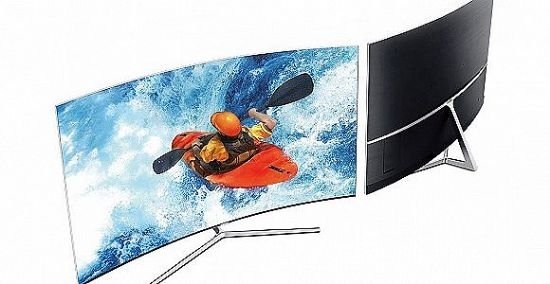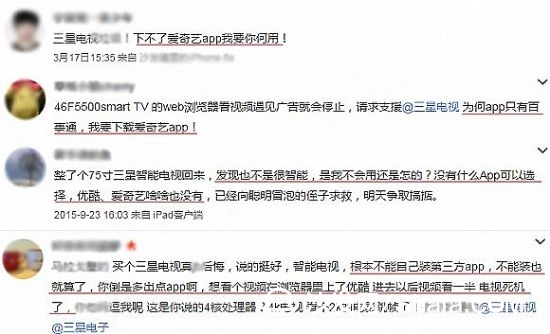Samsung is also scared of technology, platform, and content are indispensable
Recently, Samsung's TV action frequently, first exit the LCD investment in the independent OLED department, and then release the news that Samsung TV will go directly into the QLED era across the OLED, Samsung's pace is a bit people do not understand, it seems that the big sister also panicked. In the past, the high-end TV market has always been Samsung and LG. In the world, China is the world's leading producer and distributor of color TVs. High-end TVs fight technology, low-end and mid- to low-end markets, and Internet brands fight content. So now, Samsung's technology is not enough to make the product proud. Even if Samsung's latest SUHD series is released, the ratings are generally the same. Why is this? In the era of large-scale TV with hardware and content drive, the openness of the platform and the limitations of the content have become the direct constraints of Samsung.
Hardware development bottleneck

At present, the overall slowdown in demand in the TV market has become a norm. Samsung’s reelection in the big screen relies on technological advantages, but it is clear that today’s TVs have reached a development in terms of size, color, and quality. Threshold, currently Samsung's latest SUHD Quantum Dot technology television publicity mentions true reduction of 1 billion colors, and in fact, the human eye can identify up to 10 million colors, its value is far more than the human eye can distinguish, even if there are Breakthrough, but the diminishing marginal effect can not achieve too much effect.
However, Samsung is still taking technology flow. With the advent of smart TVs, the TV replacement rate has also been different from that of traditional TVs. It can be used for many years if it is clear and there are no failures. The appearance of smart TVs has also caused TVs to consider processors and memory. Hardware factors. In addition to image quality imaging, durability is hard to become a powerful selling point.
Samsung's 2016 top-of-the-line SUHD series of televisions, official description, said that "the adoption of 10-bit second-generation quantum dot display technology, the world's only environmentally friendly cadmium-free, extended service life." In the eyes of Samsung marketers, this is a high value-added product of Samsung, but in fact, smart TVs have gradually shifted from hardware-driven to content-driven, relying solely on hardware technology as a product added value or slightly thin.
Content limitations

Today, the lack of smart TV content mainly has two aspects, one is program resources, one is a high-definition film source. Today, television technology has generally improved, clear imaging, full color and other imaging issues are not the primary considerations of consumers. Consumers are more concerned about whether they can timely see the latest TV series and variety shows whether they can decode all common formats. Currently, Samsung’s sales of TVs are in a leading position, but they still face many consumers’ questions. Such doubt comes from the content aspect.
In terms of content resources, Samsung's resources must be downloaded and installed through the Samsung Apps. Users are not allowed to install third-party software. The Tizen system used by Samsung TV is a system independently developed by Samsung. The system integrates two operating systems, BADA and MeeGo. Currently, it is not as compatible as the Android platform. Users can only download and install applications from the Samsung Smart Center. Samsung Smart Center has Can not meet the needs of users, the constraints of software capabilities so that Samsung can not make the Apple App store as its own software to become an advantage.
Samsung TV is now cooperating with Mango TV, but the Video software iQIYI, Youku, etc., which are more popular with users, are still unable to download. Relatively speaking, Sony and Skyworth, which are also OLED 4K TVs, adopt the Android system. The compatibility is much more open. If Samsung cannot own too much content and insists on its own system, it will lag behind its opponents in its experience.
With regard to 4K sources, although the popularity of 4K television has gradually increased, it has not yet reached the state of popularization. At present, ordinary TV programs have a resolution of 720576 and HDTVs can reach 720P/1080P. From the point of view of parameters, the resolution of 4K screens can reach 4 times that of HD 1080P. Obviously, ordinary TV programs cannot be embodied on 4K screens. 4K can only be realized. Become a girl. At the same time, 4K smooth playback not only requires the screen, but also requires the cpu and graphics card performance. Therefore, if you want to generalize 4K sources, you need hardware level to go up one step, and you can't achieve it overnight. The dilemma faced by Samsung is not only its own platform, but also the source of all 4K TVs.
Internet brands become "spoilers"

When traditional TV manufacturers occupied the market with their complete production lines and after-sales services, a batch of “spoilers†appeared. In the increasingly important content and channels today, Levision, Xiaomi and other Internet companies have entered the market one after another. Unlike the traditional but different manufacturers, the TV brand of the Internet brand does not need to be produced by itself. The OEM factory controls the cost of materials. In the absence of imaging gaps, the low price, high configuration, complete functional resources, more open platforms, and even congenital advantages in resources all have a direct impact on Samsung.
Samsung has made relatively large adjustments to the situation in the near future and the profitability of the display unit has become increasingly difficult. At present, Samsung has launched an "withdrawal investment strategy" for its already weak profitability LCD production line, and at the same time moved to the independent OLED division. However, South Korean media has recently revealed that Samsung plans to go directly beyond the OLED into the QLED stage. Samsung had been studying OLED before and said its technology is still immature. At this point directly to QLED on the one hand by the LG and other brands OLED has been on the right track of the threat, want to use the updated technology to defeat OLED, but also because of the high cost of OLED production, cost savings.
OLED was once the only industry in the small screen of Samsung display industry to earn back the cost, but QLED TV predicts 2019 will realize. During this period, Samsung is faced with mass production of LG OLED. China-made Skyworth also has OLEDs available. At the same time, it has an Internet brand TV with content advantages and price Xinmin. It is not difficult for Samsung to readjust its plan to see its “anxiety†and how to achieve strategic effect. It can be seen that other QLED TVs can achieve true volume production and cannot solve the immediate problems.
To sum up, under the Internet situation, the traditional hardware advantage has been difficult to attract consumers. In the re-experienced consumer environment, software power is ultimately more advantageous. Samsung's TV is irreproachable in terms of technology and appearance, but its software strength has become a limiting factor for the development of Samsung TV. From Samsung's UI design, it can be seen that it pays more attention to the smooth operation of the system, but the platform is not open enough, and the inherent APP is in the eyes of the majority of consumers.
Fully utilized wiring harness, Partial utilization harness, Wire Harness
Dongguan Bofan technology Co., LTD , https://www.ufriendcc.com